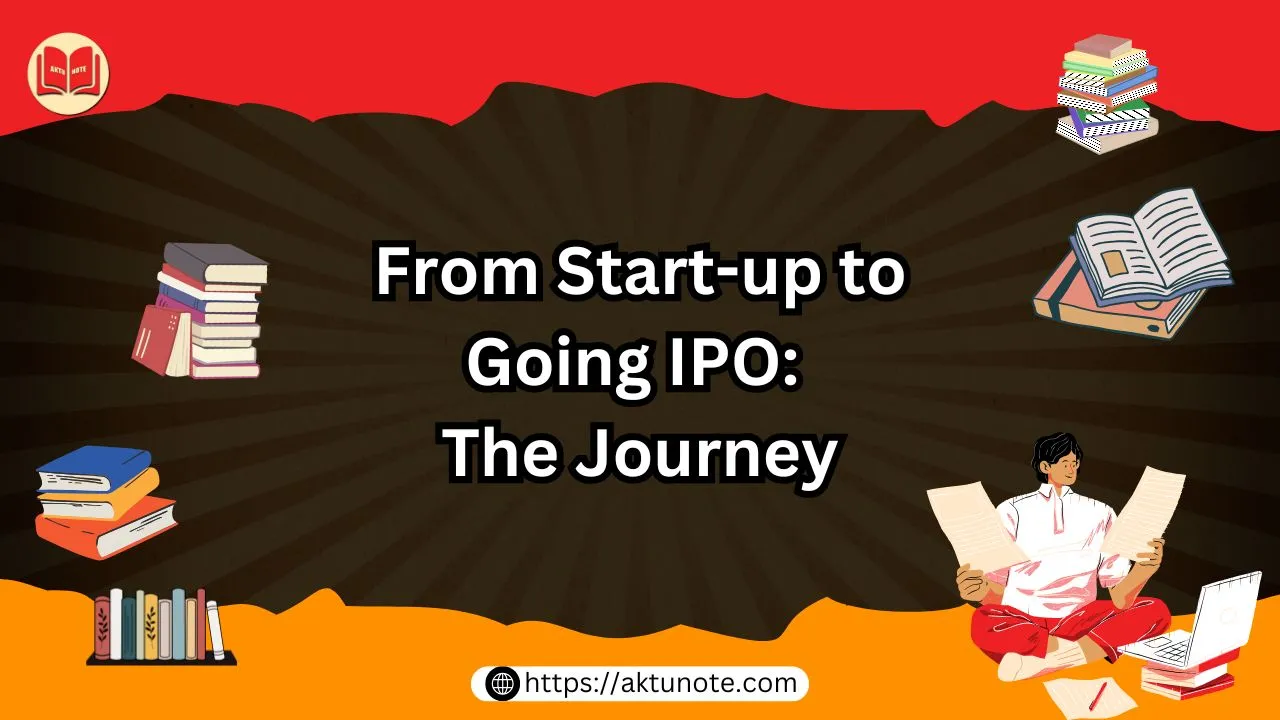Taking a business from a start-up to a publicly listed company through an Initial Public Offering (IPO) is a significant milestone in its growth journey. This transition not only represents the maturity of the business but also opens new avenues for capital and expansion. However, the path to an IPO is fraught with challenges and requires meticulous planning, financial discipline, and strategic execution.
What is an IPO?
An Initial Public Offering (IPO) is the process through which a private company offers its shares to the public for the first time. It allows the company to raise capital from institutional and retail investors by listing its shares on a stock exchange.
Importance of Going IPO
Going public through an Initial Public Offering (IPO) is a significant milestone for a company, enabling it to raise substantial capital from public investors. This capital can be used for expansion, debt reduction, or innovation. An IPO enhances the company’s visibility, credibility, and market valuation, attracting more customers, partners, and investors. It also provides liquidity for early investors and employees, allowing them to monetize their equity holdings.
1. Access to Capital
An IPO enables companies to raise significant capital, which can be used for business expansion, research and development, or reducing debt.
2. Increased Visibility and Credibility
Being listed on a stock exchange enhances the company’s visibility, credibility, and brand image. It fosters trust among investors, customers, and partners.
3. Liquidity for Shareholders
An IPO provides liquidity to early investors, founders, and employees, allowing them to monetize their holdings.
4. Currency for Acquisitions
Publicly traded shares can be used as a currency for mergers and acquisitions, making it easier for companies to expand strategically.
5. Attracting Talent
Public companies often implement stock option programs, making it easier to attract and retain top talent.
Stages of the Journey: From Start-up to IPO
The journey from a start-up to IPO involves multiple stages. It begins with seed funding and growth, where the company builds its foundation and scales operations. This is followed by venture capital investment, enabling further expansion. As the business matures, it undergoes pre-IPO preparations, such as financial audits, regulatory compliance, and appointing underwriters. Finally, the company files for IPO, markets its shares, and becomes publicly listed.
1. Start-up Phase
Focus
The start-up phase focuses on validating a business idea, building a product or service, and achieving product-market fit. This stage requires agile decision-making and resource optimization.
Importance
- Establishes a strong foundation for future growth.
- Builds customer trust and a loyal user base.
- Attracts initial funding from angel investors or venture capitalists.
Challenges
- Limited resources for development and marketing.
- Uncertainty in achieving product-market fit.
- Competition from established players.
2. Scaling Phase
Focus
Scaling involves expanding operations, increasing customer acquisition, and optimizing processes. Companies seek to establish sustainable revenue streams during this phase.
Importance
- Demonstrates the viability of the business model.
- Builds operational and managerial expertise.
- Prepares for later stages of growth.
Challenges
- Maintaining quality while scaling operations.
- Managing increased operational complexity.
- Balancing growth with profitability.
3. Pre-IPO Phase
Focus
The pre-IPO phase involves preparing the company for public listing. It includes financial audits, regulatory compliance, and improving corporate governance.
Key Activities
- Auditing Financials: Ensuring accurate and transparent financial statements.
- Building a Strong Leadership Team: Attracting experienced executives to lead the company.
- Choosing Underwriters: Selecting investment banks to manage the IPO process.
Challenges
- Meeting rigorous regulatory requirements.
- Balancing short-term goals with long-term growth.
- Managing internal and external stakeholder expectations.
4. IPO Phase
Focus
The IPO phase involves marketing the company to potential investors through roadshows and setting the share price.
Key Activities
- Filing with Regulatory Authorities: Submitting the required documents, such as the prospectus, to regulators like the SEC (USA) or SEBI (India).
- Roadshows: Presenting the company to institutional investors to generate interest.
- Pricing: Determining the initial share price based on demand and valuation.
Challenges
- Ensuring accurate valuation of the company.
- Managing investor expectations during the roadshow.
- Navigating market conditions that could impact the IPO.
Challenges of Going Public
Going public presents several challenges, including high costs for legal, regulatory, and underwriting processes. Companies face increased scrutiny from regulators, investors, and analysts, necessitating transparency and strong governance. Managing market volatility and meeting the expectations of diverse stakeholders add complexity. Additionally, public companies must adapt to ongoing compliance requirements and the pressure to deliver consistent financial performance.
1. Regulatory Compliance
Public companies must comply with strict regulatory requirements, including financial reporting, corporate governance, and disclosure norms.
2. Cost of IPO
The IPO process is expensive, involving fees for legal advisors, underwriters, auditors, and marketing campaigns. These costs can strain the company’s financial resources.
3. Market Volatility
Market conditions can impact the success of an IPO. A downturn or geopolitical instability can reduce investor interest and affect pricing.
4. Loss of Control
Going public dilutes the ownership of founders and early investors. Shareholders gain influence over key business decisions.
5. Increased Scrutiny
Public companies are subject to greater scrutiny from regulators, shareholders, and the media. This increases pressure on management to deliver consistent performance.
6. Short-term Pressure
Public companies often face pressure to deliver quarterly results, which may conflict with long-term strategic goals.
Success Stories of Start-ups Going Public
Several start-ups have successfully transitioned to public companies, showcasing the potential of IPOs. Facebook’s IPO in 2012 raised $16 billion, enabling it to expand globally and acquire key assets like Instagram. Similarly, Zomato’s IPO in 2021 marked a milestone for India’s food-tech sector, raising substantial funds and boosting investor confidence in tech start-ups. These stories highlight how IPOs can propel companies to new heights.
1. Amazon
Amazon went public in 1997 with an IPO price of $18 per share. At the time, it was a small online bookstore. Today, it is one of the largest companies in the world, with a diversified portfolio spanning e-commerce, cloud computing, and entertainment.
2. Facebook
Facebook’s 2012 IPO raised $16 billion, making it one of the largest tech IPOs in history. The social media giant used the funds to expand its platform, acquire companies like Instagram, and invest in new technologies.
3. Zomato (India)
In 2021, Zomato became the first Indian food delivery company to go public. Its IPO was oversubscribed, raising approximately ₹9,375 crore. The funds helped Zomato expand its operations and strengthen its market position.
4. Tesla
Tesla’s IPO in 2010 raised $226 million, with shares priced at $17. Despite initial skepticism, Tesla has become a global leader in electric vehicles and renewable energy, delivering significant returns to its investors.
Steps to Prepare for an IPO
Preparing for an IPO involves evaluating readiness, including financial stability and market conditions. Companies must undergo thorough audits and establish robust corporate governance practices. Appointing investment bankers and legal advisors ensures expert guidance through the process. Preparing a prospectus and regulatory filings, conducting roadshows to attract investors, and managing market expectations are critical steps. Post-IPO, companies must establish systems to comply with public reporting standards.
1. Strengthen Financial Reporting
Ensure financial statements are audited and comply with accounting standards. Transparency is critical for gaining investor confidence.
2. Build Corporate Governance
Establish a board of directors and implement governance practices that align with regulatory requirements.
3. Optimize Operations
Streamline business processes and address inefficiencies to improve profitability and scalability.
4. Choose the Right Underwriters
Partner with reputable investment banks that can manage the IPO process, from regulatory filings to marketing.
5. Develop a Growth Story
Craft a compelling narrative about the company’s vision, growth potential, and market positioning to attract investors.
Benefits of an IPO
An IPO provides multiple benefits, such as access to substantial capital, enabling growth, acquisitions, and innovation. It enhances the company’s brand visibility and credibility, attracting talent and partnerships. The process increases liquidity for shareholders, offering a return on their investments. Additionally, going public allows companies to use publicly traded shares as currency for acquisitions or employee compensation, further boosting competitiveness and long-term sustainability.
1. Enhanced Capital Access
Public listing enables companies to raise large sums of money for expansion, innovation, and debt reduction.
2. Increased Valuation
An IPO can significantly boost a company’s valuation, reflecting investor confidence in its potential.
3. Talent Attraction
Public companies can offer stock options as an incentive, attracting top-tier talent to drive growth.
4. Global Reach
Being publicly listed increases visibility, enabling the company to access international markets and partnerships.
For More Content Check Out :- KMBN 302
Conclusion
The journey from a start-up to going public is transformative, symbolizing growth, maturity, and success. While the path is challenging, with obstacles such as regulatory compliance, market volatility, and increased scrutiny, the rewards are substantial. Companies that successfully navigate this process gain access to capital, enhance their credibility, and unlock opportunities for global expansion. By learning from examples like Amazon, Facebook, and Zomato, entrepreneurs can chart a course for their ventures, ensuring long-term success and sustainability.

